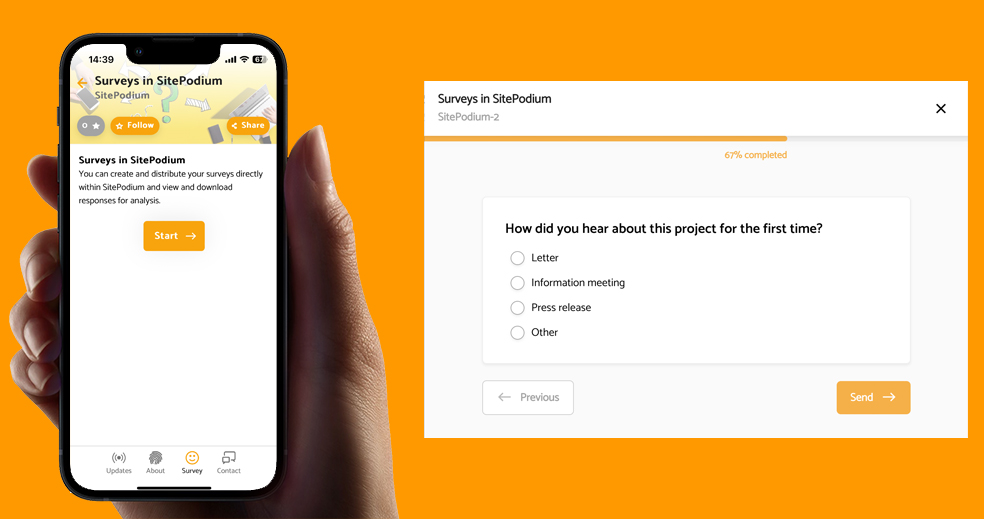“What gets measured gets managed”. While this phrase originates in Management Consultancy, it’s just as relevant to stakeholder management.
Carrying out surveys among local residents near a construction project can help you understand whether the works are impacting the community and identify areas for improvement. Here are five tips to help you design an effective survey.
1. Decide in advance how you’ll use the survey results
Knowing how you’ll act on the survey findings will shape both the way you set up the survey and how you analyse the data. This helps ensure you gather the right information and ask the right questions. When you’re clear about what you want from the survey, it’s easier to take targeted actions to address issues or make improvements to the project.
For example, if the survey reveals noise complaints, you can take steps to reduce the impact, such as installing sound barriers.

2. Keep the number of questions manageable
There are several reasons to limit the number of questions in a survey for local residents:
A lengthy survey can be time-consuming, which might reduce the response rate.
It can also result in less accurate data, as people may rush through the questions or lose focus.
Too many questions can also make it harder to analyse the responses. By keeping the survey concise, you make it easier to handle the data, present clearer results, and maintain the respondents’ engagement.
3. Mix open and closed questions
Open questions allow people to express their views in their own words, giving you deeper insights into their opinions. Closed questions, on the other hand, provide set responses, which help you gather specific information.
A combination of both types allows you to compare answers and spot trends. For example, you might find a connection between answers to closed questions and comments from open questions.
This variety also keeps respondents engaged, as answering different types of questions is often less tedious. A balanced approach helps you gather a wider range of data, spot patterns, and improve response rates.

4. Remember, not everyone will have an opinion
It’s important to recognise that some people simply may not have an opinion on certain issues. Failing to account for this could skew the results.
For instance, someone may not have an opinion because they’re not interested or lack enough knowledge about the issue. This means the survey might not capture insights from those who are neutral or disengaged.
This could also lead to incorrect conclusions. For example, you might assume that the majority of residents oppose a project based on the survey, when in fact many may not feel strongly either way.
5. Always share the results with the community
By sharing the survey findings with the respondents, you demonstrate that their feedback is valued and used. This fosters trust and transparency between the project team and the local community.
It also shows that the input is important and that concerns are taken seriously, which can encourage greater engagement from residents.
Sharing the results also provides an opportunity to take further action, address issues, or make improvements to the project.

Creating Surveys with SitePodium
Did you know you can create surveys using SitePodium? Our Survey Module is the ideal solution for stakeholder managers looking to gather feedback and insights from the local community.
With its easy-to-use interface, you can quickly create customised surveys and gather the information you need to keep the community informed and engaged.
Get in touch to find out more.
